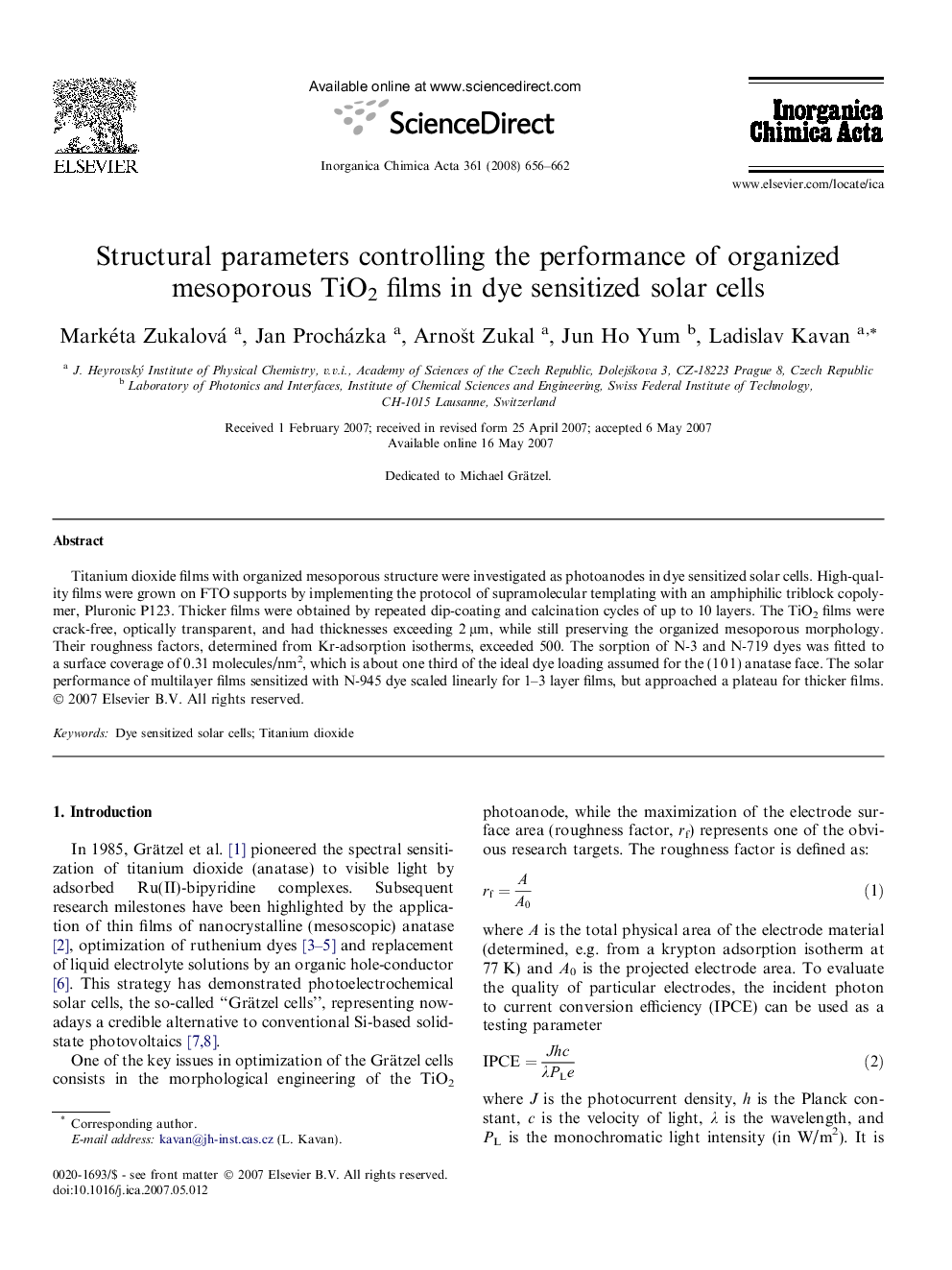| Article ID | Journal | Published Year | Pages | File Type |
|---|---|---|---|---|
| 1309233 | Inorganica Chimica Acta | 2008 | 7 Pages |
Titanium dioxide films with organized mesoporous structure were investigated as photoanodes in dye sensitized solar cells. High-quality films were grown on FTO supports by implementing the protocol of supramolecular templating with an amphiphilic triblock copolymer, Pluronic P123. Thicker films were obtained by repeated dip-coating and calcination cycles of up to 10 layers. The TiO2 films were crack-free, optically transparent, and had thicknesses exceeding 2 μm, while still preserving the organized mesoporous morphology. Their roughness factors, determined from Kr-adsorption isotherms, exceeded 500. The sorption of N-3 and N-719 dyes was fitted to a surface coverage of 0.31 molecules/nm2, which is about one third of the ideal dye loading assumed for the (1 0 1) anatase face. The solar performance of multilayer films sensitized with N-945 dye scaled linearly for 1–3 layer films, but approached a plateau for thicker films.
Graphical abstractHigh-quality TiO2 films were grown on F-doped SnO2 conducting glass by implementing the protocol of supramolecular templating with an amphiphilic triblock copolymer, Pluronic P123. The TiO2 films were crack-free, optically transparent, and had thicknesses exceeding 2 μm, while still preserving the organized mesoporous morphology.Figure optionsDownload full-size imageDownload as PowerPoint slide
